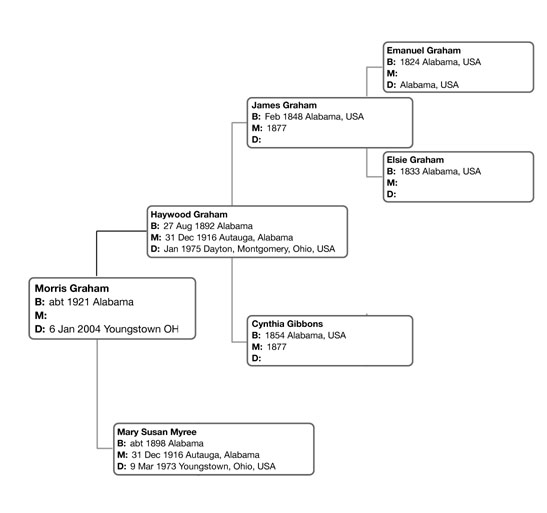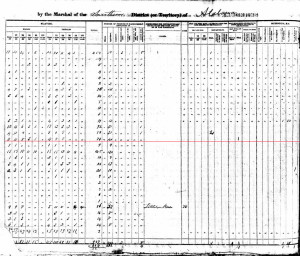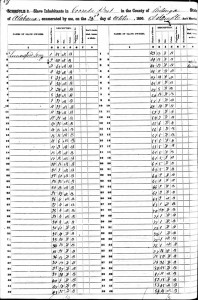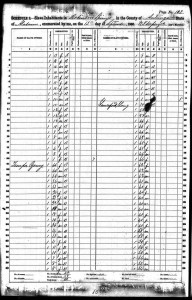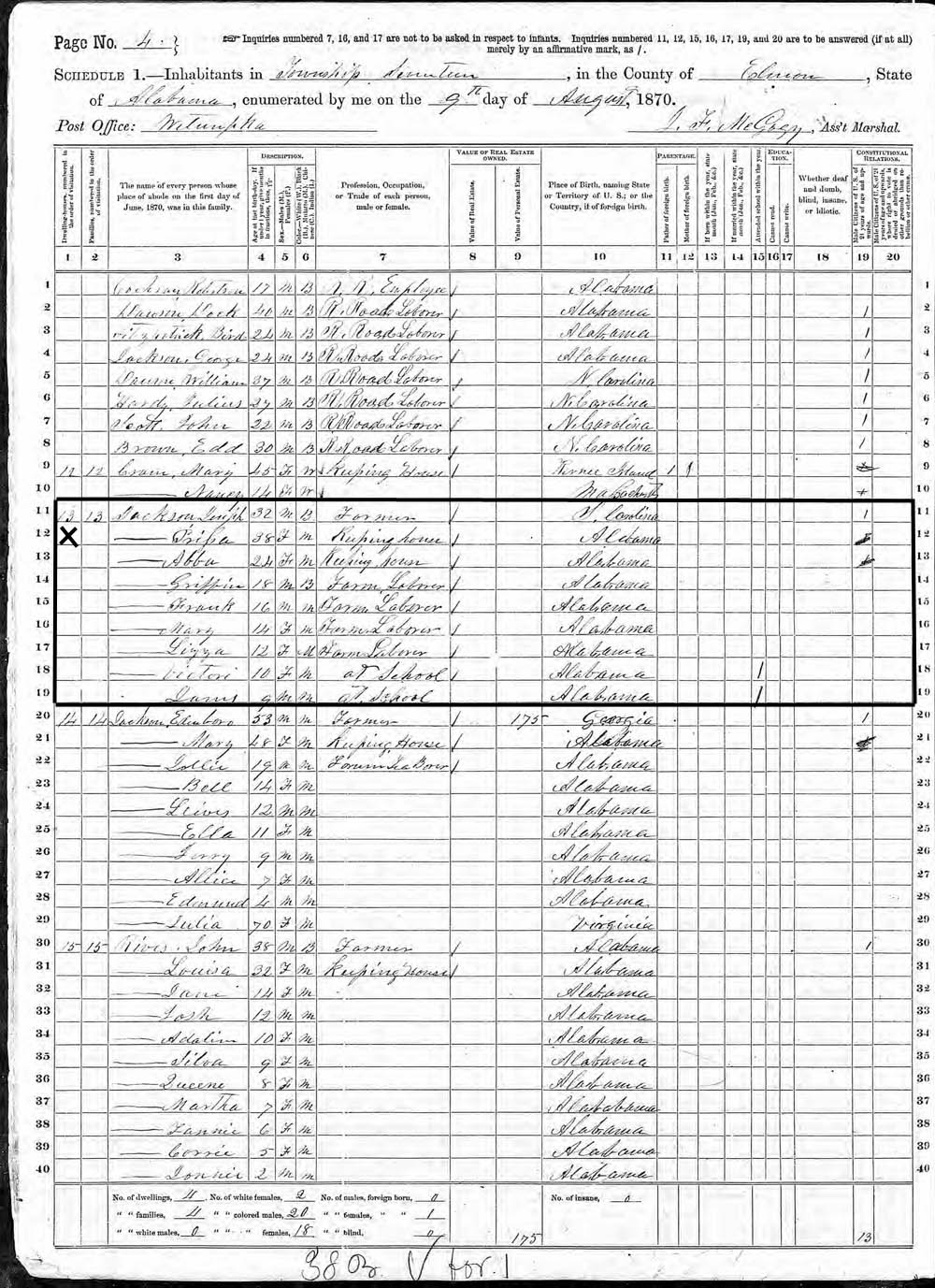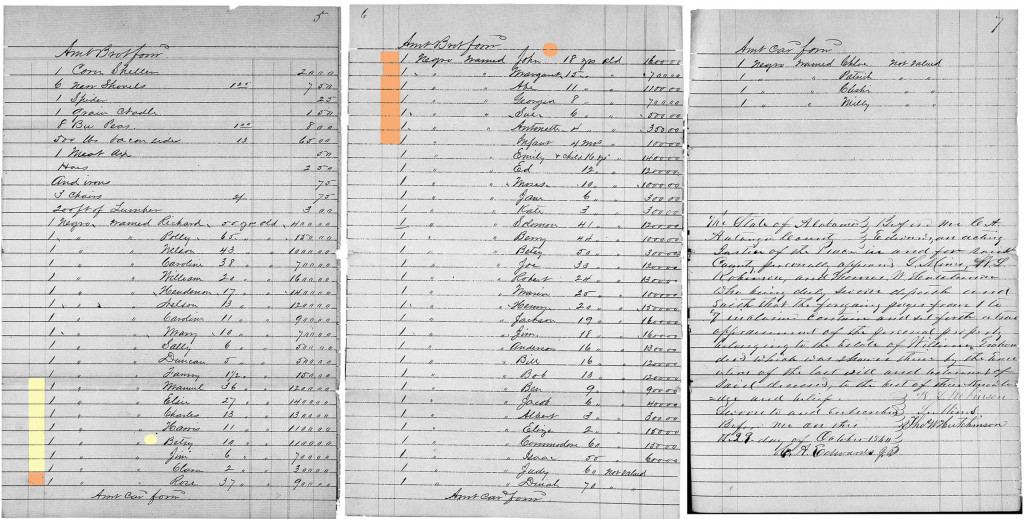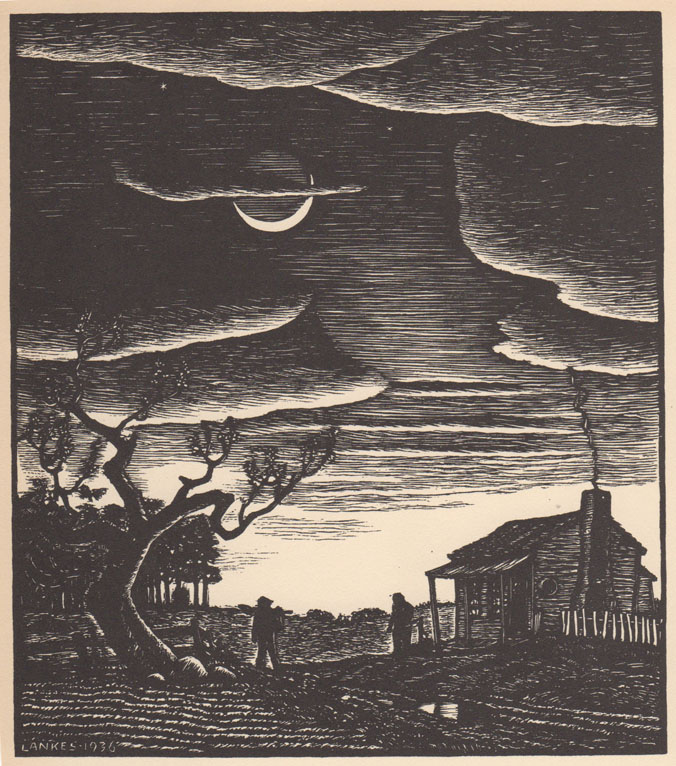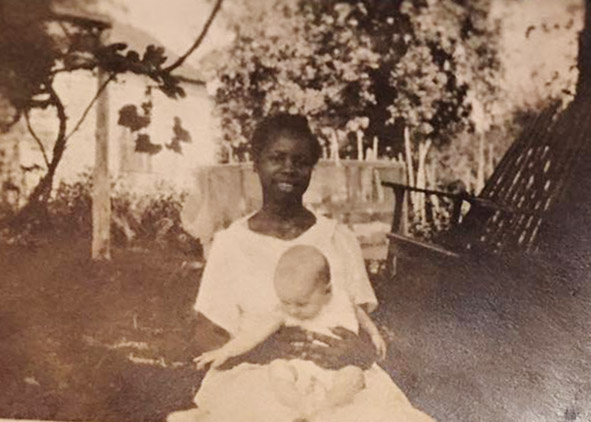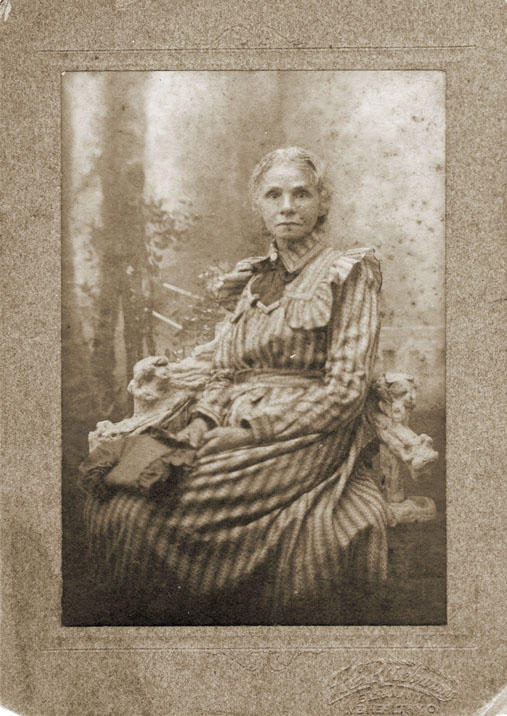This is my 4th year participating in the A-Z Challenge. I am writing about people who were born into slavery and lived to be free. Sometimes I also write about the descendants of slaves who were born free. Today I will write about Georgia and Mitchell Graham of Alabama.
I started by searching for the Georgia listed among the enslaved in the estate file of Judge William A. Graham. In 1860 she was 8 years old and valued at $700. I found a Georgia in 1870 living with her mother Millie Washington and Millie’s husband George and seven year old George, in Elmore, Elmore County, Alabama, ten miles from the Judge’s plantation in Prattville. There was a Millie listed in the estate file. In the file she was “not valued” and no age or monetary value was given. Millie Washington found in 1870 was 58, which would have made her only about 48 in 1860. I wasn’t sure if these were the people from the Graham plantation, but I followed them anyway because her name started with “G” and because their story was so varied and interesting.
Mitchell Graham and Georgia Washington were married in Elmore County on January 8, 1876. Four years later we find them with three small children. Georgia’s widowed mother lived with them. They were farming their own land. Fifteen acres were improved and 25 acres were wooded. The value of his farm, including land, implements and animals, was $150. He had $3 worth of farm implements and $75 worth of livestock. The value of all farm products (sold, consumed and on hand) for 1879 was $125. He had one working ox, no milch cow, 1 swine and 4 barnyard fowl. Mitchell planted four acres of Indian corn which yielded 40 bushels. He planted 15 acres of cotton and got two bales.
By 1897 the family had left the farm and moved 108 miles north to the city of Birmingham, Alabama. They rented their home. In 1900 Mitchell, 46, was working as a laborer in a rock quarry, as did one of his sons. Georgie was 44 had birthed 12 children. Eight were living. Seven of the children, from age two to age 22 were living at home. They had been married 24 years. Everybody in the household was literate. Georgia didn’t work outside the home. The oldest son worked as farm labor. The oldest daughter worked as a cook. The fifteen year old son was an errand boy and the next two children were in school. The baby was two.
Ten years later Georgia, 49, and Mitchell, 50, owned their home, although it did have a mortage. Mitchell and one of his sons worked as a builder at a pipe shop and had been out of work for 16 weeks. Three of the children were still home, including 12 year old Stella who attended school. Two grandchilden, ages six and three, lived with them and they had a border. Georgia worked as a laundress from home and had not been out of work at all. One of the sons and the border were coal miners and had not been out of work.
In 1917 and 1925 Mitchell appears in the City Directory as an Evangelist and a minister. I could not find them in the 1920 census. Mitchell died on October 29, 1925. He was 73. Georgia died on January 15, 1928. She was 76. I found it inspiring that they were so open to change. And I loved finding so much information about them.
Special note to my husband who is my proof reader: Take the age changes from census to census with a grain of salt.



